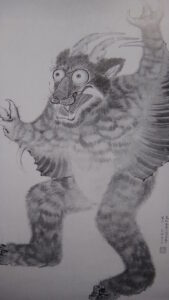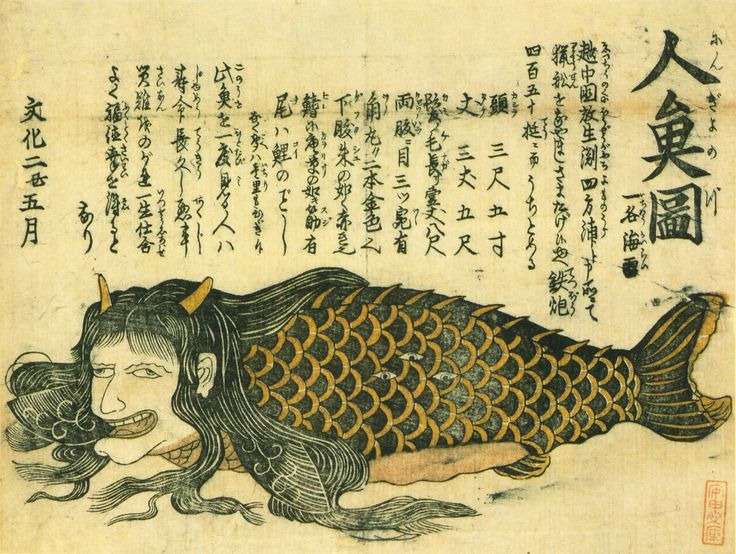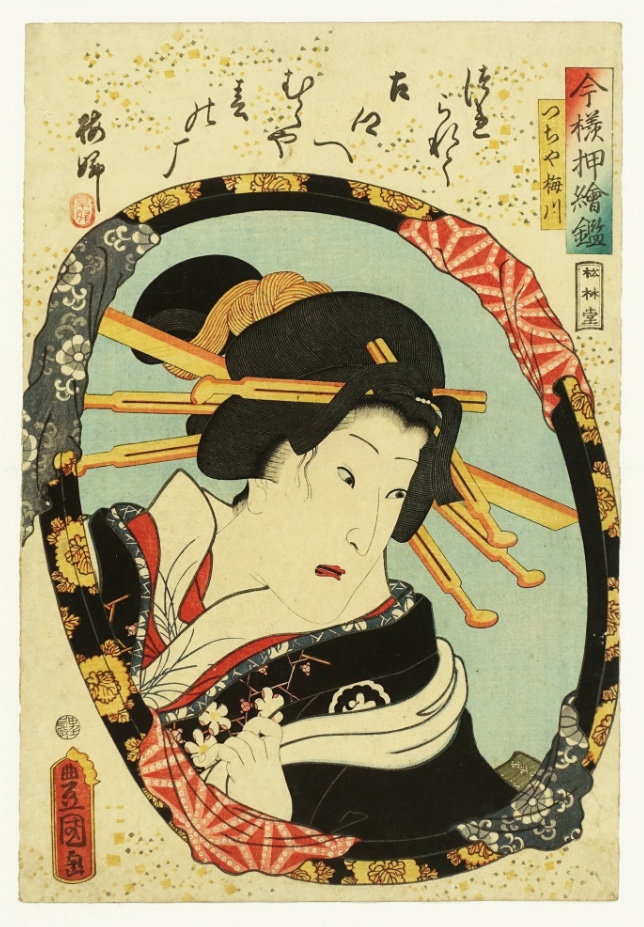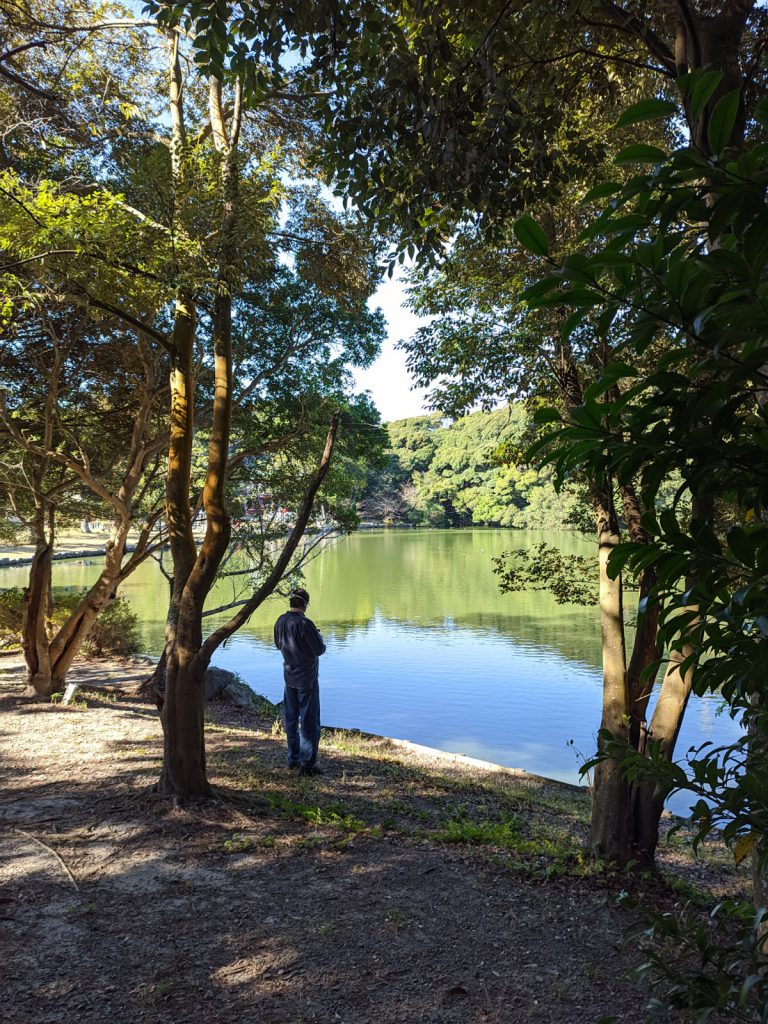Hello there, I’m Thersa Matsuura and you’re listening to Uncanny Japan.
It’s the end of January and that means Setsubun is just around the corner. Setsubun, if you’re unfamiliar, is the day before spring starts, the last day of winter. It’s usually on February 3rd — it is this year — but sometimes falls on the 2nd or 4th. It’s when after the sun goes down, households all around Japan gather with handfuls of roasted soybeans, throw open their doors, and scattering some of those beans outside, call: Oni wa soto! Oni stay out! Then tossing a few inside: Fuku wa uchi! Good fortune come in!
But I’ve talked about Setsubun before, in Episode 29 – The Devil’s are Coming. And I’ve talked about oni before, Episode 93 – The Ferocious Oni. But what I haven’t talked about is a particular kind of oni, something called an ushi-oni or gyūki, or … cow demon. Oh, I wouldn’t be laughing if I were you. They’re quite the murderous beast and today I’ll tell you how to recognize one, where they are found, why they’re so heinous, and I’ll also tell you a couple interesting ushi oni legends and more.
Intro
Hey hey, for today’s background soundscape I hiked into the mountains, far away from civilization and I found this river to hang out by. Exactly the place you don’t want to be when trying to avoid an ushi oni. But I’m sure I’ll be fine.
The Name Ushi Oni
Let’s see, what do we know about these fearsome brutes. The kanji is straightforward, ushi oni/牛鬼, ushi means cow or ox and oni, demon or ogre. Their other name gyūki is just the on-yomi for the same characters. Another “just in case you didn’t know”: a single kanji character has at least two pronunciations in Japanese. The on-yomi/音読み and the kun-yomi/訓読み. On-yomi come from the Chinese pronunciations and kun-yomi from the Japanese. So ushi oni and gyūki are the exact same characters, actually.
I’ve known about these guys for a long time but never did any research. I guess because I’ve never really heard anything about them locally here in Shizuoka. And now I know why. They’re mostly found west of me, in the Kinki and Shikoku areas with popular legends from Mie, Wakayama, Kagawa, etc.
First Mentioned in Literature
So once I did dive in, holy cow (ha), was I surprised at how much information is out there! Myths and legends abound, so there’s no way I’m going to be able to cover everything, but I can give you a nice taste of this foul beast.
Before I get into what they look like, let me just mention the ushi oni has been around for a very long time and was written about way back in the Heian Era where it was referred to as an Osoroshiki Mono, or terrible thing in the Pillow Book.
What do They Look Like
Okay so what do they look like? That’s a bit complicated. Originally, they looked like what you expect them to look like, a big ol’ ox head on the body of big ol’ oni. But there are also references to a bull’s head on a kimono-clad human body and the body of an ox with the head of an oni.
But probably the most common image is the one you find in old scrolls, where an ushi oni has the head of an ox, but the body of a giant spider, with blade-like claws. So how did that happen? It’s believed this is a kind of merging of yokai and it came about from some legends of Minamoto no Yorimitsu.
In one of those stories, you’ll find Yorimitsu-san defeats an ushi oni, and that monster he battles has an oni body and a cow head like I just mentioned a minute ago. If that sounds familiar I’ve talked about these before somewhere. But his ushi oni looked like a gozumezu, or a pair of demons called Ox Head and Horse Face in English. These are two creatures who guard the Gates of Hell and are, hey, the first things you meet after you die. Wonderful. They’ll escort you through the underworld if you’re lucky. Nice. And if you try to escape, they’ll come hunt you down and do unspeakable things to you. Okay.
Anyway, back to Minamoto no Yorimitsu-sama. There’s another tale of him defeating a tsuchi gumo or giant dirt spider or earth spider — I’ll do an episode on that little buddy later — but for now it’s assumed that those two legends got mixed up somehow, so that the ushi oni you see quite a bit is now a giant spider with ox head.
In a book I have written in Japanese about yokai, it says that ushi oni have soft bodies and bright red horns. Even though they are huge, they don’t make any sound when sneaking up behind you. Or even if they bump into something, completely silent. They’ve also got long tongues, those claws on the end of their spider legs, and fangs.
Where Are they Found
So where can you run into an ushi oni? It’s a good idea to be careful when you’re around water. Ocean, rivers, lakes, waterfalls, and even the forest in general and caves in particular, which doesn’t leave a lot of Japan left, mind you.
But why water? It’s a cow-spider, not a fish. While I’ve never seen a water buffalo in Japan, I have read you can find them in Okinawa, and there are depictions of them in old artwork. So if you think about those very conspicuous horns the ushi oni has on its head, why yes, they do look like a water buffalo’s horns. That might be the connection there.
Another thing about where they live. It’s really interesting that in the Kinki region and in Shikoku there are actually places named Ushi oni Buchi and Ushi oni Taki. An ushi oni taki is a Cow Demon Waterfall, but let me explain real quick what a Ushi oni Buchi, or fuchi is.
I actually translated an old folk tale a while back for patrons called Kappa no Fuchi and I had to learn what one was as I can’t find a single one-word definition of them. A kawa no fuchi is the part of a river that runs really deep. It’s often at the bend in a river or near a bunch of rocks. A quick translation brought up the “abyss of rivers”, which sounds dramatic until you start reading folktales and lots of bad things happen in those dark deep places called a fuchi. It’s a good image.
So there really are places named after the ushi oni, where they lived or appeared in the past or maybe even today. I don’t know. But how would you know? Well, if your ever up in the mountains, walking alongside a river and you see the water is muddied, especially a fuchi area, then there might be an ushi-oni down there mucking about. Or if you’re really lucky or unlucky, you might see its whiskers or a tail sticking up above the cloudy water. That’s another tell tale sign right there.
But there are also stories about how if you’re near a body of water an ushi oni might approach you transformed into a beautiful woman. If that happens, you should stay calm and catch her reflection in the river. If she’s reflected as a terrible ox headed demon. She’s not a woman. She’s a terrible ox-headed demon. And you’re pretty much screwed.
Can I just add here what did old Japan have against beautiful women? Can you imagine how hard life was if you just happened to be really attractive back then. And everywhere you go for most of your life people are accusing you of being this yokai or that tanuki or this nine-tailed fox or that ushi-oni. That had to have been hard.
Why are They Heinous?
Over and over it’s written how brutal, ferocious, and blood thirsty the ushi oni are. Basically, they’ll just eat you alive. And if that isn’t bad enough, if you try to capture, attack, or kill one, it’s not going down. But it will hold a grudge, remember you, and then one day when you’re least expecting it, it will eat you alive.
Don’t think you’re off the hook if just see one either. Just glimpsing an ushi oni will make you sick. Sometimes to the point of vomiting blood. Oh, and they spew poison sometimes. So there’s that. My absolute favorite thing though is, if they lick your shadow you’ll come down with a high fever and possibly die. In Wakayama Prefecture they do something called “kage wo kū” that’s one level up where they eat your shadow, which is in effect eating your soul.
As if it isn’t bad ass enough, sometimes, though, the ushi oni likes to pair up with its friend the nure onna and together they make a fine game out of your demise. It goes something like this,
Working Together with Nureonna
For example, in Shimane Prefecture, the nure onna — who looks like a big snake with the face of a woman and long, wet stringy hair — or probably more accurately the iso onna — who looks like just a poor woman wearing a kimono — will be walking on the shore carrying a crying infant, calling out for someone to help. If you go and see if she’s okay, she’ll hand you that baby to hold for a little bit. And then that bundle of joy will begin to grow heavy in your arms, so heavy that you are unable to move. And then from the ocean rises the enormous form of the ushi oni who will proceed to gobble you up.
Legend from the Temple Negoroji
There’s another interesting legend of an ushi-oni from a temple called Negoroji in Kagawa Prefecture on Shikoku. Negoroji means fragrant root temple. Remember that. Anyway, while there is a Senju Kannon enshrined there, a Thousand-Armed Kannon, there is also a painting and statue of the ushi oni that are arguably more famous. The painting was drawn in 1808 by an artist named Yukigan Ishida and it’s a joyous image that I can’t get enough of.

Imagine a beast standing on two legs, a somewhat monkey-like head with ox horns, big round eyes, big possibly bat-like ears. The creature has an open mouth showing downward facing sharp fangs. It’s sporting a stripped furry body like a tiger, hands with three clawed fingers are raised and there are frilled bat wings under its arms. I’ll put a picture in the show notes. It’s quite scary-cute. Like if it jumped out at you in the middle of the night you’d be like: What the?! But if it turned up dancing at a festival you’d be like: Aww~.
So briefly, the legend of Nekoroji goes something like this. About 400 years ago an ushi-oni appeared near the temple and destroyed the fields. A master archer named Yamada Kurando Takakiyo set out to shoot the ushi-oni, but no matter where he looked he couldn’t find it. He then prayed to the Senju Kannon for help and kept a look out for the beast. Finally, on the 21st day he saw the sparkle in the ushi-oni’s eyes and shoots even as the ushi oni was leaping toward him. First arrow misses. Second arrow misses. The third arrow strikes the beast right in its open mouth. The ushi oni howls in pain and runs off. Takakiyo follows the blood trail and finds it dead. He cuts off its horns and presents them to the temple. Where they still reside today in a wooden box labeled ushi oni.
Are there Good Ushi Oni?
But, Terrie, they can’t always be such horrible human flesh rending monsters. And I’d say, yeah, you’re right. There are stories of some big hearted ushi oni. Here’s one:
This is a legend from Wakayama Prefecture. The story is that a long time ago a young man named Ueda was passing by the Mio River when he saw a beautiful girl. Ahem. She was very hungry and asked for some food. Ueda shared his obento with her. Fast forward to two months later when Ueda was again walking by the river, but this time there was a flash flood and he was swept away. The fast moving water carried him, half drowning to an Ushi-oni no Fuchi, one of those deep abyss like areas. But as he neared, he saw the girl from before on the bank. She, too, saw her lunch buddy Ueda, quickly transformed into an Ushi-oni and swarmed into the water and saved him.
But, sadly, not without a price. The legend has it that if an Ushi-oni saves a human their body will melt away and they’ll disappear. Which is exactly what happened. Immediately after it rescued the young man, it dissolved right there into a pool of blood.
An Ushi Oni Festival
Did you know, there’s a festival, too. It’s called the Warei Taisai Uwajima Ushi Oni Matsuri and it takes place in Ehime Prefecture, Uwajima City, during the month of July usually from the 22nd to the 24th. In the festival gigantic, six meter high bull-shaped floats are carried on the backs of packs of young men, parading through the streets of the city. They all have long necks with oni masks and horns and have sword for a tail. Sometimes they’ll meet and face off with each other, there’s lot so chanting and fun. At night at least one of them will go into the river and swim! I read somewhere that there are twenty of these ushi oni and they’re in all in different bright colors. There are quite a few matsuri festivals in Japan I one day want to see. I just added this one to my list.
Really a Camellia Root?
Now here’s something odd. There are also legends that the ushi oni is the spirit of a camellia root. Yes, really. Camellia is tsubaki in Japanese and an important and holy flower. Useful, too, tsubaki oil was and is still used to oil hair and make it shiny and beautiful. It’s been used since the Heian Era. Anyway, the tsubaki plant contains a great spirit and tsubaki flowers are found in places where ushi oni appear, therefore an ushi oni is the spirit of a tsubaki?
Okay, I don’t know about that one, but let me wrap up today’s show with my favorite ushi oni is a tsubaki spirit tale.
Once upon a time an old fisherman went out to sea one night to fish. While out on the dark water, he saw an ushi oni appear in front of his boat. The old man bravely fought the ushi oni and dragged it all the way back to his home where he threw it on the ground and fell asleep in exhaustion. The next he called all the villagers to show them his great accomplishment and get their praise. Everyone gathered to see this loathsome beast he’d killed with his bare hands. After a few minutes, one of the villagers went over and struck it with a stick and announced: That’s not an ushi oni, it’s just a big old tsubaki root.
I absolutely believe that happened. 100% that story is true. Dark night, old man mistakes a big root for an ox demon, fight ox demon roots, drags it home, brags to friends and neighbors, learns it wasn’t a cow demon after all, just a root. Old man argues, no that can’t be true. It must have turned into a root during the night. Entire village is like, Yea right grandpa.
Okay, Thank you all for listening, big hug to patrons and supporters of the show. Thank you Richard for doing my sound and making us an Uncanny Japan forum. Yes, we’re on Discord, but there’s something about old fashioned forums that are so much easier to follow conversations, start your own conversations and not get lost in a topic. Richard even finangled it so that if you post in the forum a notification will show up on Discord. So if you’d like to join us on either of those, check out the show notes for links.
If it hasn’t been canceled, the next video I’ll put up for you will be the Setsubun Festival at the big Shrine in town. I’ll talk to you all again in two weeks.
Bye bye






